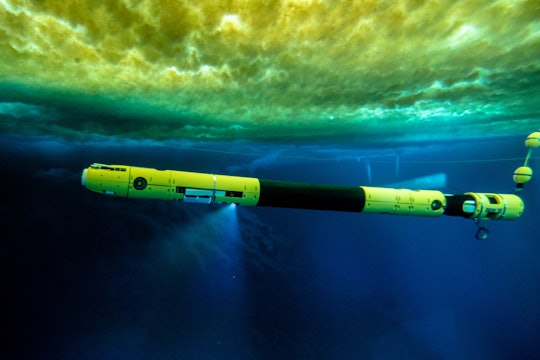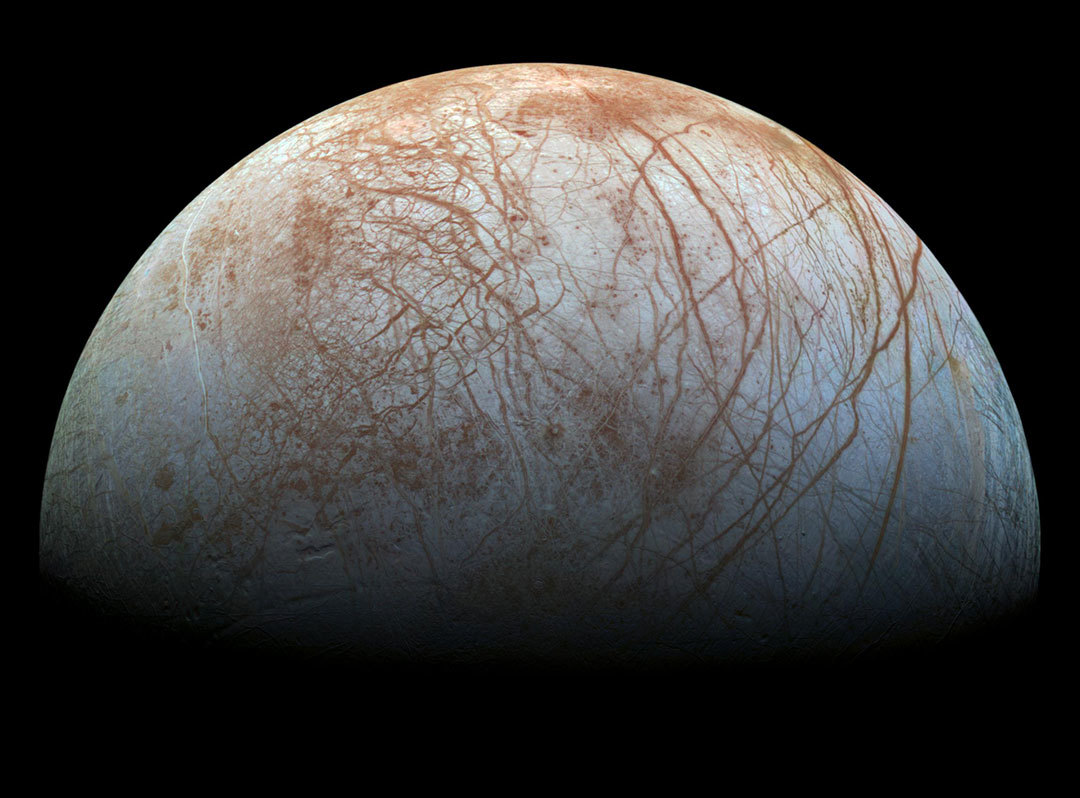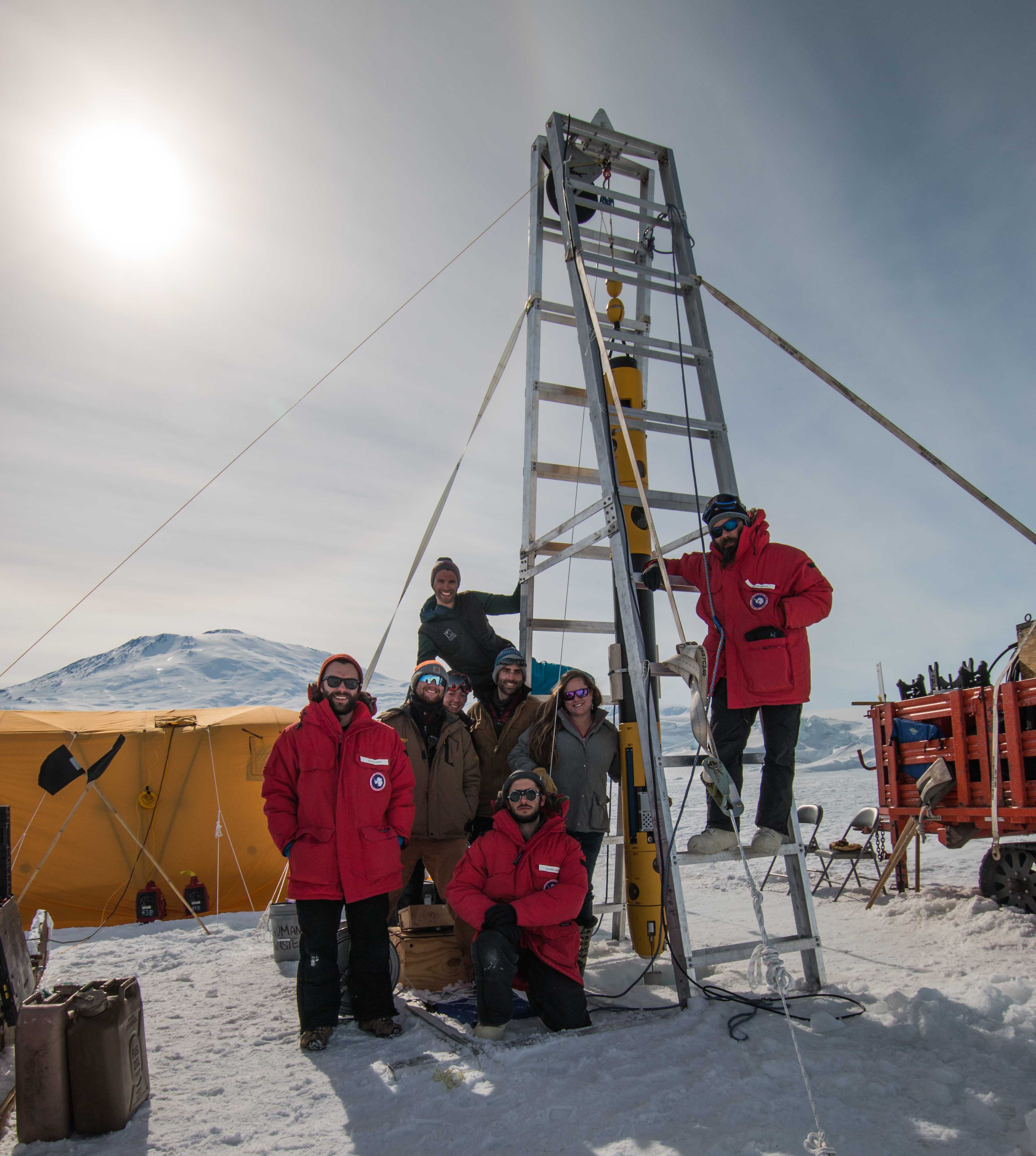
RISEUP/B. E. Schmidt/J. Lawrence
Scientists want to search for life on Jupiter's moon. They're starting in Antarctic oceans
An autonomous robot is practicing to explore Europa
The harsh and icy ocean surrounding Antarctica may seem like a strange place to be doing research about Jupiter, but since 2014, a team of Georgia Tech engineers and scientists in Britney Schmidt’s Planetary Habitability and Technology Lab, where I'm a graduate student, has been designing, building — and sometimes breaking — an underwater robot there. The robot, named Icefin, will eventually help the team learn about ocean worlds in other parts of the solar system, as well as exploring beneath Antarctic ice along the way.
The environments may be more similiar than you might think: as it turns out, Earth isn’t the only place in our solar system with an ocean. Odds are you’ve heard of Europa, one of Jupiter's moons. Originally discovered by Galileo in 1610, Europa’s icy surface is chilled to about 110°Kelvin (or -274°F). But as Jupiter’s immense gravity squeezes Europa like a stress ball, the heat produced by that friction provides enough energy to keep its ocean from freezing solid. Add a rocky core with a composition similar to Earth’s, and the possibility of hydrothermal activity at the seafloor, and Europa could be just the kind of place to raise your simple, single-cellular kids — much the same way life may have begun here over 3.5 billion years ago.
"As far as we know, Europa is the only planet in the solar system that has had many of the same qualities as Earth over the last 4.5 billion years," says Schmidt, the head of the Icefin team. Though there are other ocean worlds too, like Saturn’s moon, Enceladus, a diminutive satellite that actively vents saline liquid into space, Europa is the closest and best bet in our search for life off Earth.

Europa
NASA
But it's not exactly a hospitable environment for research: While the ocean is liquid, the frozen crust certainly isn’t, and it’s tens of kilometers thick. That’s where Icefin and the Antarctic come in. Icefin is shaped like a torpedo, and designed to work in deep water and autonomously at great distances. It's 12 feet long, but only about 10 inches wide, enabling it to fit through narrow holes in the ice, which is key to accessing oceans both on Earth and, in the future, Europa.
Ice also presents additional challenges beyond just gaining access to the ocean. Water blocks navigational signals, which is why GPS doesn’t work underwater here on Earth. So Icefin will have to be able to map out its environment in real time. Here too, the oceans below Antarctica’s ice shelves actually make for a decent dress rehearsal — they’re both relatively isolated from the ‘normal’ open ocean environment and essentially unexplored.
Another hurdle the researchers face is the communication delay over space's vast distances — Jupiter is over 40 light minutes away at its nearest, meaning radio signals (which travel at the speed of light) will take 40 minutes each way from Earth. So robots deployed in Europa’s ocean will need to be able to think for themselves without constant human intervention, as well as recording what they find. The researchers have practiced artificially delaying communications to Icefin to simulate real mission conditions with limited human input, although the team usually bends the rules and uses fiber optic tethers for real time data and to make sure they can haul Icefin back. It's always a bit nerve-wracking when we deploy Icefin, even when the vehicle is working perfectly; the ice varies in thickness and hardness, depths are unknown, currents can be unpredictable, and at a few of our sites we share the access holes with seals.

RISEUP/B. E. Schmidt/D. Dichek
Perhaps the team's biggest challenge, however, is deciding what set of observations a future life-finding mission would have to make to conclusively state that life is present. One of the primary questions they have to answer is whether they're designing sensors for something that looks like terrestrial life as we know it, or something entirely different. Other forms of life might have evolved to take utterly different forms, and may not even use familiar metabolisms or molecules like DNA. And of course, whatever instruments they create have to fit on a 10-inch robot.
So far, the team has decided to equip Icefin with a few essentials for its underwater search: cameras, sonar, and sensors to measure temperature and salinity. It will also have the ability to measure oxygen, pH, dissolved organics, or chemical imbalances in the water that suggest nearby hydrothermal inputs.
This information can broadly indicate if a region is habitable — at least, to life as we know it — but can’t necessarily say if anything is actually living there. For that, the team is now designing more complicated tools, such as miniaturized cell counters, about the size of a deck of cards, and compact microscopes capable of capturing 3D images of particles in the water column.
Fortunately researchers will have the next several decades to refine both the technology and the design before launching it toward Europa, giving them plenty of opportunities to explore Antarctica. Early studies have discovered entirely new kinds of life in the ice, with unique adaptations not seen anywhere else in the world.
Robotic systems are improving too, as underwater vehicles gain the ability to map and sample environments under ice autonomously. Hopefully as our understanding of how to look for life on Earth evolves, we'll be able to apply these lessons in deciding what to pack for a trip to Europa.
